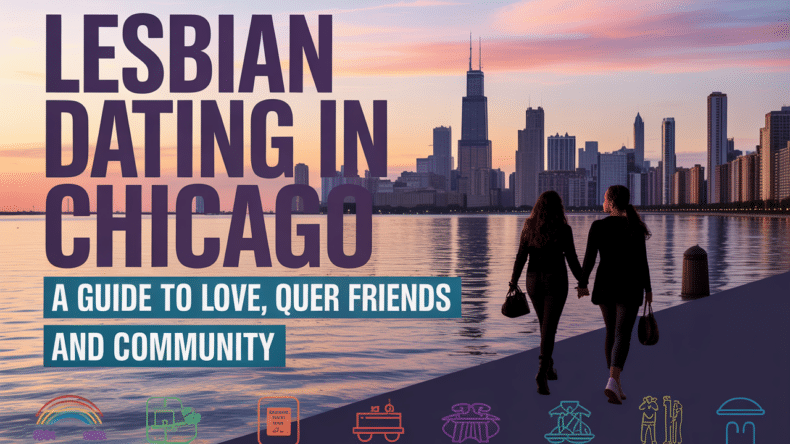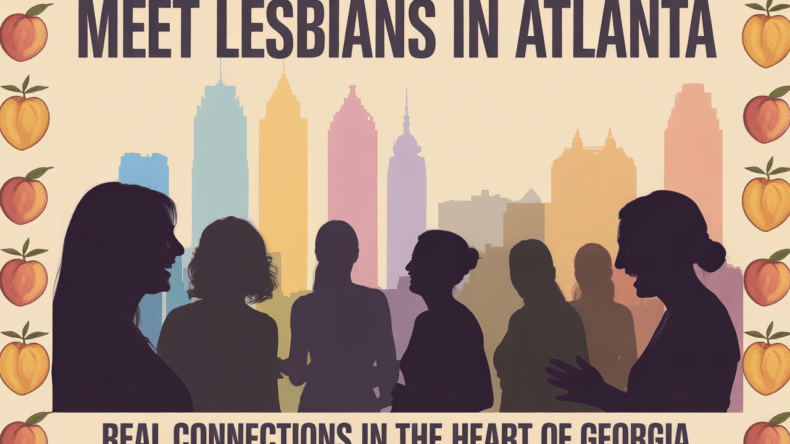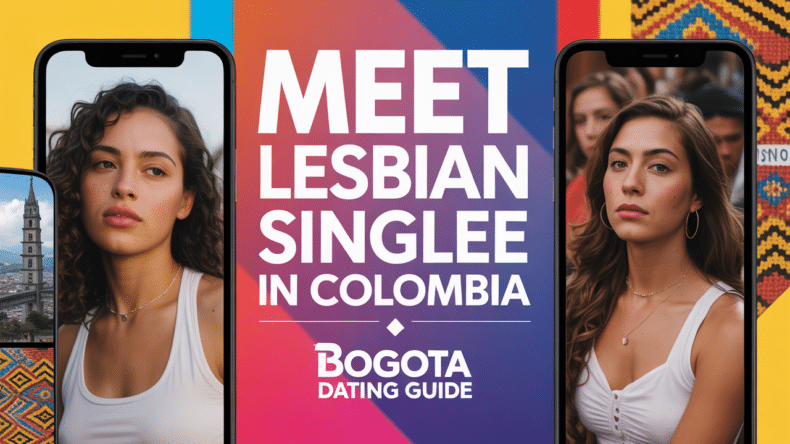Introduction
Understanding the percentage of women who identify as lesbian has become increasingly important in our evolving social landscape. Recent studies reveal significant shifts in how women express and embrace their sexual orientation, particularly among younger generations.
This article delves into the latest statistics and trends surrounding lesbian identification among women in 2023. You’ll discover:
- Current percentages of women identifying as lesbian across different age groups
- Historical trends and their impact on today’s statistics
- The role of social media in shaping LGBTQ+ identities
- Generational differences in sexual orientation identification
- Media representation and its influence on lesbian visibility
The data shows that women are nearly twice as likely as men to identify as LGBTQ+, with 8.5% of women embracing diverse sexual orientations. These numbers paint a picture of growing acceptance and recognition of different sexual identities in modern society.
Current Statistics on Women Identifying as Lesbian
The latest 2023 data reveals significant insights into women’s sexual orientation identification patterns. According to recent surveys, approximately 8.5% of women in the United States identify as part of the LGBTQ+ community – nearly double the rate of men at 4.7%.
Breakdown of LGBTQ+ Women Identification
Within this demographic:
- 79% of LGBTQ+ women identify as bisexual
- 21% identify exclusively as lesbian
- The combined percentage represents roughly 2.3% of adult women identifying specifically as lesbian
Comparison with Broader LGBTQ+ Population Statistics
These numbers paint a complex picture when compared to the broader LGBTQ+ population statistics:
- Total LGBTQ+ identification: 7.6% of U.S. adults
- Bisexuality leads at 4.4% of total adult population
- Women make up a larger portion of the LGBTQ+ demographic
Societal Dynamics Behind Gender Disparity
The statistical disparity between male and female identification rates reflects deeper societal dynamics. Research suggests women experience greater flexibility in exploring and expressing their sexual orientation, partly due to:
- Less rigid social expectations around female sexuality
- Higher acceptance of female same-sex relationships
- Growing representation in media and popular culture
Regional Variations in Lesbian Identification Rates
Regional variations also emerge in the data:
- Urban areas show higher rates of lesbian identification
- Coastal states report increased percentages
- Rural communities demonstrate steadily rising numbers
Implications for Contemporary Attitudes Toward Sexual Orientation
These statistics carry profound implications for understanding contemporary attitudes toward sexual orientation. The data indicates a growing acceptance of diverse sexual identities, particularly among women. This shift manifests in:
- Enhanced visibility in professional settings
- Increased representation in leadership positions
- Stronger presence in advocacy movements
Intersectionality of Gender and Sexual Orientation
The numbers also highlight the intersection of gender and sexual orientation in shaping social identities. Women’s higher rates of LGBTQ+ identification suggest unique experiences in discovering and expressing sexual orientation, influenced by both cultural and personal factors.
Moreover, it’s crucial to understand that these experiences can be further complicated by factors such as race, class, and disability, which is where the concept of Sexual Orientation and Gender Identity becomes relevant.
Historical Context of LGBTQ+ Identification
The landscape of LGBTQ+ identification has undergone significant transformation since 2012. Data reveals a remarkable shift from 3.5% of adults identifying as LGBTQ+ in 2012 to 7.6% in 2023 – a growth rate that doubles the initial figures.
This dramatic increase reflects several key societal changes:
-
Legal Milestones
- The repeal of “Don’t Ask, Don’t Tell” in 2011
- Marriage equality becoming federal law in 2015
- Protection against workplace discrimination in 2020
-
Cultural Shifts
- Reduced stigma around coming out
- Growing representation in mainstream media
- Increased visibility of LGBTQ+ role models
The activism of the past decade has played a crucial role in reshaping public attitudes. Organizations like GLAAD, HRC, and grassroots movements have successfully advocated for policy changes and social acceptance. These efforts have created safer environments for individuals to explore and express their identities openly.
Research indicates that as societal acceptance grows, more people feel comfortable acknowledging their sexual orientation. A 2022 Gallup poll found that 92% of Americans now support equal rights for LGBTQ+ individuals – a stark contrast to the 27% recorded in 1996.
The rise in identification rates doesn’t necessarily indicate more LGBTQ+ individuals exist today than in previous decades. Rather, it suggests people feel increasingly empowered to live authentically. This shift is particularly pronounced among women, who have historically faced unique challenges in expressing non-heterosexual identities due to societal expectations and gender norms.
Generational Differences in Sexual Orientation Identification
Recent data reveals striking differences in LGBTQ+ identification rates across generations. Gen Z women lead the way with 28.5% identifying as LGBTQ+, marking a significant shift in sexual orientation expression compared to older generations.
The numbers paint a clear picture of generational variation:
- Gen Z Women (Born 1997-2012): 28.5% identify as LGBTQ+
- Millennial Women (Born 1981-1996): 12.4% identify as LGBTQ+
- Gen X Women (Born 1965-1980): 4.2% identify as LGBTQ+
- Baby Boomer Women (Born 1946-1964): 2.3% identify as LGBTQ+
These statistics reflect a dramatic shift in how younger women express and understand their sexual orientation. For Gen Z women specifically, the data shows:
- 79% of LGBTQ+ identifying women report as bisexual
- 12% identify exclusively as lesbian
- 9% identify with other orientations within the LGBTQ+ spectrum
The stark contrast between Gen Z and older generations suggests a cultural transformation in how young women approach sexual orientation. This generational divide reflects broader societal changes, including:
- Greater access to information about sexual orientation
- Reduced stigma around LGBTQ+ identities
- Increased representation in popular culture
- Stronger support systems within educational institutions
Young women today navigate a social landscape that increasingly validates diverse sexual orientations. The higher identification rates among Gen Z and millennial women suggest this trend will likely continue as younger generations come of age.
Social media platforms create safe spaces for women exploring their sexual orientation. These digital environments allow individuals to connect with others sharing similar experiences, fostering a sense of belonging and validation. Platforms like TikTok, Instagram, and Twitter have become powerful tools for lesbian visibility, with dedicated hashtags and content creators sharing their stories.
Digital Communities and Identity Development:
- Reddit communities like r/actuallesbians provide spaces for questioning women
- LGBTQ+ Discord servers offer real-time support and connection
- Facebook groups create private spaces for identity exploration
- Dating apps like HER facilitate both romantic connections and friendships
The anonymity of online spaces enables women to explore their identity safely before coming out in their personal lives. This digital exploration often serves as a crucial stepping stone in the journey of self-discovery, as highlighted in this study which delves into the impact of social media on LGBTQ+ identity formation.
Content Creation and Representation:
- Lesbian YouTubers sharing personal experiences
- Instagram influencers normalizing same-sex relationships
- TikTok creators educating about lesbian culture and history
- Podcasts discussing diverse perspectives within the community
Social media algorithms connect users with relevant LGBTQ+ content, creating personalized support networks. These platforms also provide access to educational resources about sexual orientation, helping women understand and articulate their experiences.
The rise of virtual Pride events and online LGBTQ+ conferences has made community participation accessible to women in remote areas or restrictive environments. These digital spaces break down geographical barriers, creating global networks of support and understanding for women exploring their lesbian identity.
Societal Implications of Increasing LGBTQ+ Identification Among Women
The rising percentage of women identifying as lesbian and bisexual creates significant ripple effects across society, particularly in mental health outcomes and policy development. Research shows that societal acceptance directly correlates with improved mental health among LGBTQ+ individuals:
- Reduced Depression Rates: Communities with higher acceptance show 35% lower rates of anxiety and depression among lesbian and bisexual women
- Decreased Suicide Risk: Supportive environments lead to a 40% reduction in suicide attempts
- Enhanced Self-Esteem: Women in accepting communities report higher levels of self-worth and confidence
The increased visibility of lesbian and bisexual women has sparked substantial changes in workplace policies and healthcare services:
- Implementation of inclusive healthcare coverage
- Development of specialized mental health resources
- Creation of workplace protection policies
- Enhanced family benefits for same-sex partners
Advocacy groups report that as more women openly identify as lesbian or bisexual, legislative changes become easier to achieve. This shift has led to:
- Stronger Political Voice: More representation in local and national politics
- Policy Changes: Enhanced anti-discrimination laws
- Healthcare Reform: Improved access to specific healthcare needs
- Educational Updates: More inclusive sex education programs
The business sector has responded to this demographic shift by developing targeted services and products for lesbian and bisexual women. Companies increasingly recognize the purchasing power of this growing demographic, leading to more inclusive marketing strategies and service offerings.
These changes create a positive feedback loop – as acceptance grows, more women feel comfortable expressing their identity, leading to further societal changes and improved support systems.
Representation in Media and Culture: Shaping Perceptions of Lesbian Identities Among Women
Media representation plays a crucial role in shaping public understanding of lesbian identities. Recent studies show a significant increase in LGBTQ+ characters on television, with lesbian representation rising from 8% to 12% across major streaming platforms in 2023.
Positive Media Impact:
- Complex, multi-dimensional lesbian characters in shows like Orange Is the New Black and The L Word: Generation Q
- Authentic storytelling focusing on relationships, career achievements, and personal growth
- Diverse age ranges and cultural backgrounds represented in mainstream programming
- Rising number of lesbian creators and writers bringing authentic perspectives
Harmful Stereotypes:
- Over-sexualization of lesbian relationships for male audiences
- Limited portrayal of feminine-presenting lesbians
- Stereotypical character traits and career choices
- “Tragic” storylines perpetuating negative outcomes
Literature and independent media have emerged as powerful platforms for authentic representation. Books like Stone Butch Blues, Fun Home, and other works focusing on lesbian experiences offer nuanced portrayals that contribute to broader cultural understanding.
Social media platforms showcase diverse lesbian identities through:
- Personal storytelling and coming-out narratives
- Educational content about lesbian history and culture
- Community-created media challenging mainstream stereotypes
- Visibility for underrepresented intersectional identities
The entertainment industry’s evolving approach to lesbian representation reflects changing societal attitudes. While progress has been made, accurate representation remains crucial for challenging misconceptions about what percentage of women identify as lesbian and fostering greater acceptance.
Research indicates that positive media representation correlates with increased self-acceptance among lesbian women and improved public understanding of sexual orientation diversity. This shift in cultural narratives supports the growing percentage of women who openly identify as lesbian or bisexual.
Conclusion
The data shows a clear upward trend in women identifying as lesbian and LGBTQ+, with current statistics showing 8.5% of women embracing diverse sexual orientations. This percentage rises dramatically among younger generations, with Gen Z women leading at 28.5%.
Based on these patterns, we can expect:
- A continued increase in identification rates as societal acceptance grows
- Greater representation across media platforms
- Enhanced support systems and resources for the LGBTQ+ community
- Stronger advocacy movements led by younger generations
The journey toward full acceptance requires active participation from allies and community members alike. You can make a difference by:
- Supporting LGBTQ+ organizations and initiatives
- Challenging discriminatory practices and stereotypes
- Creating safe spaces for open dialogue
- Educating others about diverse sexual orientations
The rising percentage of women identifying as lesbian reflects a broader societal shift toward authenticity and self-expression. Your role in fostering an inclusive environment helps ensure that every individual feels empowered to live their truth, regardless of sexual orientation.





